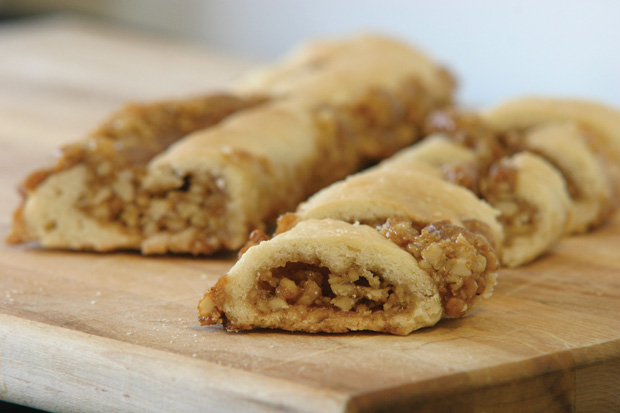Understanding Rosh Hashanah Food Traditions
Published August 28, 2013
Food occupies a central role in each of our major holidays, and most of us know the basics. We eat matzah on Passover to commemorate our hasty Exodus from Egypt. We eat latkes on Hanukah to celebrate the miracle of the oil that burned for eight days. And we eat Hamentaschen on Purim to remind us of the evil Haman.
Next week on Rosh Hashanah, Jews the world over will dip a slice of apple into honey to express our hope for a sweet year. But that apple in honey, as I recently learned, is just one of several foods that our religion deems significant in the celebration of the Jewish New Year. Indeed, there are certain foods that Jews around the world eat on Rosh Hashanah in the belief that they are simply family traditions without realizing their deep roots in the Talmud.
To better understand this connection, I spoke with Rabbi Ze’ev Smason of Nusach Hari B’nai Zion in Olivette. “The Talmud is the elucidation of the written Torah,” Rabbi Smason said, “and thus it explains the Five Books of Moses. There are three categories of symbolic foods for Rosh Hashanah, and each has its own blessing. The first is sweet tasting foods, such as apple and honey, which are symbolic of our wish for a sweet year. The second, which includes pomegranates and fish, are foods that allude to abundance and to our wish to be fruitful and multiply. The third category, which includes foods such as carrots, beets, leeks and cabbage, allude to the destruction and eradication of our sins and our enemies.”
ADVERTISEMENT
What makes these three basic food categories particularly fascinating is how their preparations vary as we move from country to country and culture to culture. Take fish, for example. It falls within the second category of food items and is usually served as the first course at Rosh Hashanah meals. But one culture’s fish appetizer can differ dramatically from another culture’s version. If you are of Ashkenazi descent, your family’s version will be gefilte fish. And if your ancestors came from Poland, the gefilte fish will be sweeter than if they came from Russia. In Sephardic homes, however, the fish appetizer is baked or fried. Again, that tradition varies by country. Moroccans prepare the fish appetizer in tomato sauce while Sephardic Jews in France prefer it in tarragon sauce.
Nevertheless, a fish appetizer is still a fish appetizer, and despite its variations from culture to culture, it is still recognizable as a fish dish connected to the second category of foods for Rosh Hashanah. Occasionally, however, a Jewish community has experienced an event so unique that it has engendered an unusual food tradition whose connection to Rosh Hashanah is not immediately apparent.
One such example—Sfratti—has its origins in the former Jewish ghetto in Pitigliano, Italy. While Jews in America and elsewhere celebrate Rosh Hashanah with a dessert of honey cake, the Jews of Italy conclude their meal with a honey-infused pastry that most of us have never seen or heard of.
ADVERTISEMENT
As I learned from Claudia and Francesca, two historians at the Jewish Museum of Culture in Pitigliano, the Jews of that town were expelled from their homes in 1622. The Italian police, as the legend goes, used sticks to forcibly evict them. Sfratti, the Italian word for stick, was a pastry the Jews of that region created to resemble those sticks. Although there are only a handful of Jews left in Pitigliano, Sfratti can be found in pastry shops throughout Italy. The honey-laden pastry, which bears a similarity to strudel, is traditionally served for dessert on Rosh Hashanah.
This year as you begin planning your Rosh Hashanah menu, take a moment to think about how your family’s traditional dishes are linked to the three categories of foods summarized by Smason. You may even be inspired to add or substitute a new dish whose primary ingredients are specifically mentioned in the Talmud. If nothing else, you will gain some new perspective on that jar of Manischewitz Gefilte Fish.
Best wishes to you and your family for a sweet and healthy New Year.
Margi Lenga Kahn is the mother of five and grandmother of four. A cooking instructor at the Kitchen Conservatory, she is currently working on a project to preserve the stories and recipes of heritage cooks. She welcomes your comments and suggestions at [email protected].
















